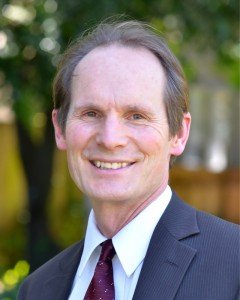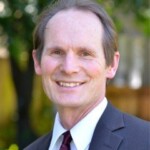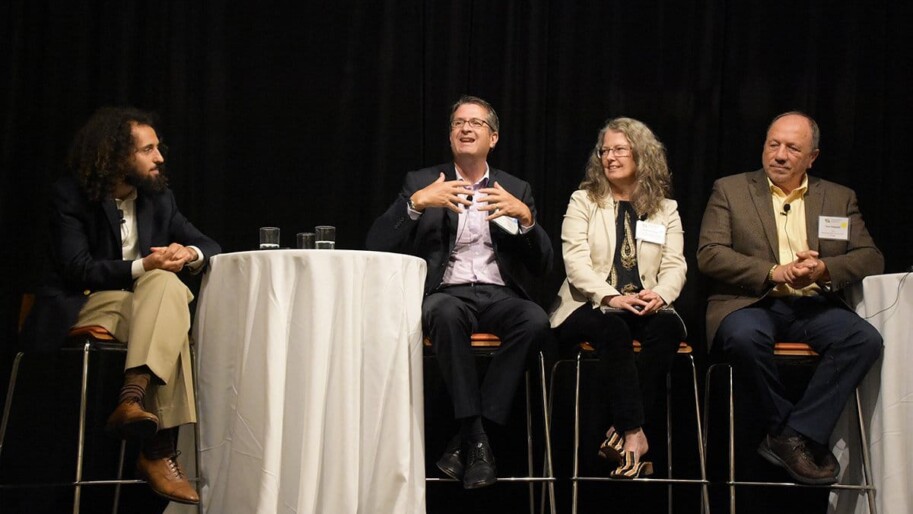In late June, 325 Community Choice operators and advocates, clean energy businesses, and elected officials from around the state converged on the Business of Local Energy Symposium hosted by The Climate Center (CCP) and our partners in Southern California to discuss best practices and what leadership in a dynamic environment of local clean energy means.
The Climate Center’s Executive Director Ann Hancock started the day noting that Community Choice has grown exponentially in the last few years in California. There are now 19 agencies serving cleaner more affordable energy to over 10 million customers in 160 cities around the state. She pointed out that on average the electricity of those 19 agencies is 86% greenhouse gas emissions-free, and that the California Public Utilities Commission estimates that by 2030 Community Choice agencies (CCAs) will be responsible for procuring 90% of California’s new renewables.
At the same time, many speakers noted that California’s energy system is facing serious challenges. The Governor’s Strike Force on Wildfires released a report in April pointing out that approximately 25 percent of the state’s population – 11 million people – live in an area that is classified as under very high or extreme wildfire threat. The liabilities for property damaged created by the fires in 2017 and 18 drove PG&E to file for bankruptcy protection and two other major investor-owned utilities in southern California have had their credit ratings downgraded. The state faces the challenge of managing PG&E’s bankruptcy, ensuring that wildfire victims are taken care of, and trying to make California safer in the new normal of heightened wildfire risk brought on by a combination of climate change and antiquated or poorly maintained electricity transmission infrastructure. The last several years have seen Distributed Energy Resources (DER) like solar grow, which presents challenges to a grid that frequently now has a surplus of solar in the middle of the day.
Given these realities, what is the role of Community Choice Agencies (CCAs)? Geof Syphers, the CEO of Sonoma Clean Power, was not able to attend the Symposium this year but did record a short video that addressed some of these issues. He pointed out that costs of the wildfires and PG&E’s past mistakes are now being foisted upon ratepayers – while they also must contend with the utilities de-energizing the lines to avoid future wildfires. Syphers said that when customers are paying more money for less reliable service, remaking California’s entire energy market is squarely on the table.
To address some of these issues, Syphers said that the state has considered municipalizing PG&E, which is an idea with some merit, but he suggested that Community Choice Agencies provide much of the benefit of this approach and are a more politically feasible and less costly approach. He said the state legislature and the California Public Utility Commission need to stop trying to undermine CCA’s authority through pursuing centralized procurement and reducing their flexibility in other ways. He pointed out that CCA’s are laboratories for new climate and clean energy programs having developed 60 programs in the last five years. These programs will help us get to the state’s climate goals and should be encouraged. He also suggested that the state set up a multi-million dollar bridge loan fund that could help disadvantaged communities – like those in the Central Valley and inland areas of Southern California – launch a CCA as a way to move our energy system in the right direction.
The Keynote panel that included Clifford Rechtschaffen, Commissioner, California Public Utilities Commission (CPUC), Angelina Galiteva, on the board of California Independent System Operator, Shalini Swaroop, General Counsel for MCE, Kendall Helm, Vice President Energy Services for San Diego Gas and Electric and was moderated by Rick Brown, the President of TerraVerde Energy. They addressed the questions of how do we reach California’s clean energy and climate goals while providing reliability, safety, and resilience to our communities, what role do the utilities play, how do they need to change, and what reform is needed at the CPUC?
The Keynote speaker former Senator Fran Pavely, author of the groundbreaking Global Solutions Act and other significant climate and environmental legislation, reminded the audience what it took to pass comprehensive climate and energy legislation. One thing she emphasized was building the broadest coalitions possible. She joked that if you are trying to get something through the legislature “then you want CCP’s Ann Hancock on your side.” Pavley said that transportation, which represents 37% of total emissions by source, remains California’s big challenge in reducing carbon emissions. She recognized that CCAs are helping reduce greenhouse gas emissions in transportation and encouraged them to do more. Pavley said CCAs can show leadership on things like helping to electrify everything, creating markets for energy storage, and creating safer, fire-resilient communities through energy storage, microgrids, and land use planning.
In sessions throughout the day examples of the innovative programs that Syphers referred to were presented by some of the Symposium’s 67 speakers. Both Kathy Wells of Lancaster Choice Energy and Richard Schorske, a consultant with ZNE Alliance, spoke about an ambitious and exciting project Lancaster is working on under a California Energy Commission grant with a host of technical partners called Advance Energy Community (ACE). They plan to build two zero net energy residential developments with renewable microgrids, create a network of three school-based microgrids as Community Resiliency Centers, establish a Lancaster Virtual Power Plant, and develop large-scale customer-sited energy storage. Rafael Reyes of Peninsula Clean Energy spoke about their collaboration with Silicon Valley Clean Energy to assist over 30 municipal governments in their service territories in developing reach codes that would go beyond current state codes for energy efficiency and reducing the need for natural gas in new homes. Matthew Marshall ,the CEO of Redwood Coast Energy Authority described a microgrid project that they are developing in partnership with Schatz Energy Research Center at Humboldt State University and PG&E on a 7-acre site with a 2.25 MW solar array and battery energy storage system that will keep their airport and local Coast Guard station up and running in times of emergency.
Plenary speaker Lorenzo Kristov, who is a consultant working on the transition to an energy system with high levels local distributed energy resources and was a principal at California Independent System Operator for 16 years, tackled the issues of utility reform and community resilience head-on in his afternoon presentation. Kristov, talked about the need to achieve two major goals in the face of climate disruption. First, stop making things worse by ending the use of fossil fuels by adopting sustainable energy practices, and decarbonizing the electricity system and the economy. Second, prepare for impacts of damage done from the greenhouse gases we have already loaded into the atmosphere. He said that we do this by making communities more resilient.
He argued that both of these require engaging local communities. We decarbonize society through local planning and initiatives, by aligning local land use and other planning with energy system planning and state climate goals. We enhance resilience through local electricity systems like solar plus storage and microgrids that can continue service at critical community facilities when the grid is down in times of disruption. To be effective, this approach needs to be coupled with the reform of the investor-owned utility business model. They need to be incentivized through performance-based regulations to focus them on distribution system operation and working as partners with local governments. This model would be an “Open Access Distribution System” that encourages distributed energy resource non-wires generation or demand-side management. He called this whole package “Advanced Community Energy” (ACE) and quoted Buckminster Fuller, “In order to change an existing paradigm you do not struggle to try and change the problematic model. You create a new model and make the old one obsolete.”
I ended the day by inviting the CCAs to join us and our partners in implementing Kristov’s vision of Advanced Community Energy.
In the coming year, the Center will be working to build a coalition of local governments, nonprofits and Community Choice agencies to push Advanced Community Energy legislation in Sacramento. Advanced Community Energy supports an energy system that fosters innovation and that will provide customers safe, reliable, resilient, and carbon-free power.


